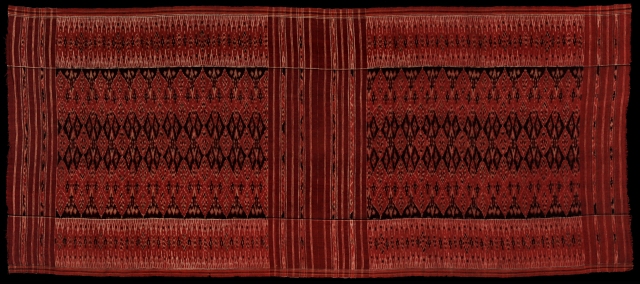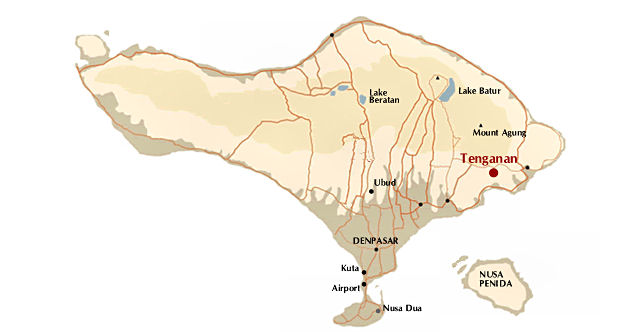Patola inspired kamben cepuk - from Bali and Nusa PenidaSome of the most beautiful Balinese textiles are the kamben (or kain) cepuk: patola inspired weft ikats with four colours that play a very important ritual role and are ascribed great powers. The most highly regarded kamben cepuk are made not on Bali itself, but on the small off-shore island of Nusa Penida - a dirt poor place, rocky and dry, quite unlike the lush paradise one might expect next to paradisiacal Bali. The two chief ikat producing localities are Tanglad, a small village in the centre of the island of Nusa Penida, and the neighbouring hamlet of Julingan. Their weft ikat textiles are revered throughout Bali for their supposed magical and especially protective powers. Kamben cepuk have also been made in other parts of Bali, for instance in Amlapura (the former Karangasem), Tabanan and Gyaniar, but these have never been held in quite the same esteem as those from Nusa Penida. 
Early 20th C Balinese kamben cepuk in cotton, natural dyes, with patola inspired pattern. Pusaka Collection, No. 043. One would think therefore that the Balinese have a very positive feeling about the island. The opposite is true. In the past, the kings of Klunkung in Eastern Bali used Penida as a penal colony, where they sent common criminals, political rivals and otherwise undesirable subjects. Perhaps as a result, the general aspect of the population is quite different from the main island. Physical beauty and grace are hard to find, and it is quite a challenge to get people smiling on Penida. The culture of the islanders differs from that of the Balinese in several respects, and the Balinese are somewhat fearful of them. Nabholz-Kartaschoff, in her contribution on cepuk in Textiles in Bali, noted that: "in the ideology of many Balinese, the mysterious cepuk cloths are associated with Nusa Penida, the origin of all evil and magic, personified in the divine and demonic figure of Ratu Gede Mas Mecaling who, in the company of his myrmidons, annually visits the whole of Bali with crop failures, sickness and death." It can be hard to determine whether a kamben cepuk was made on Bali or on Nusa Penida, except when the tonality is very dark, the colour of dried blood. Such cloths (see PC 046) come only from Nusa Penida. |



